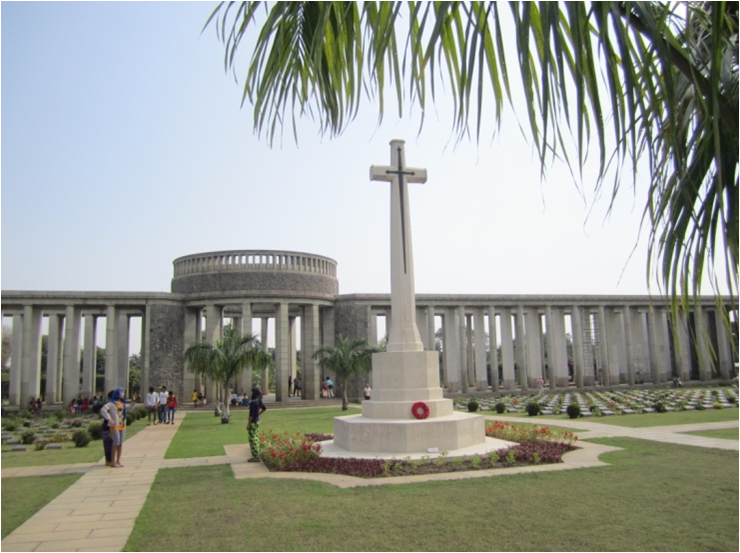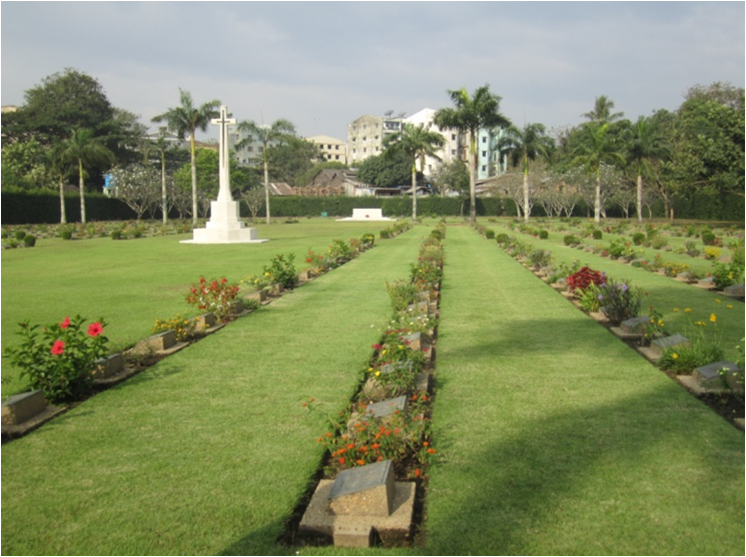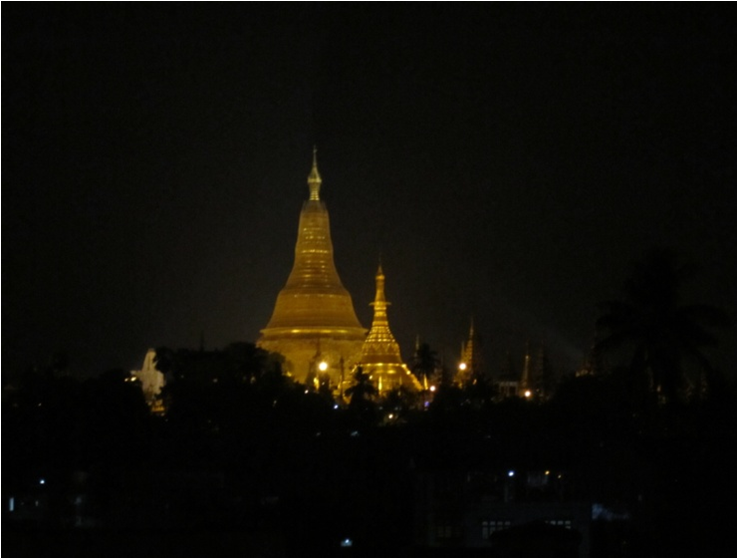For details of all of the services and events taking place at the church please visit A Church Near You.
Wreaths to Burma



Burma (Myanmar) January - February 2015
Two poppy wreaths were gathering dust in Broughton Church vestry, and were destined for disposal. They now lie in the two Commonwealth War Cemeteries in Burma, each one bearing a card
In remembrance of those who fought and suffered, and those who died and rest here, particularly those with no known grave.
St Mary’s Church, Broughton with North Newington, Oxfordshire, England
I travelled again to Burma in January this year. I first attempted to enter this country in 1973, unsuccessfully, but on many occasions since have travelled widely within Burma (Myanmar), with a group of friends who share a common link of family members having served in the Burma Campaign of the Second World War - ‘The Forgotten Army’. Several of these friends have family members buried in Burma. We have trekked through jungle and scrub, up mountains and rivers retracing the steps of some of those who fought in service for others. We also enjoy the beauty and the cultural heritage of this country, and always receive a warm welcome from its wonderful people. We have a Burmese Guide who obtains special permits for us to visit unusual areas of the country, although the authorities are sometimes mystified by our requests for non-touristy places.
This year we visited the Northern Chin Hills, which were only only opened up for visitors last year. We travelled on rough roads, only a few landslides hindering our progress along the Tiddim Road, which connects Kohima, Imphal and Tamu - one of the main highways in WW2 and the only land supply route for both sides. It was very cold, particularly at night.
Burma has three Commonwealth War Cemeteries. As always we visited Rangoon Cemetery and Taukkyan Cemetery on the first day of our trip. Rangoon War Cemetery, in the city, is the smallest. Here there are 1,391 graves. It was first used as a burial ground immediately following the recapture of Rangoon in May 1945. Later, the army relocated graves there from several other burial sites in and around Rangoon, including those of the men who died in Rangoon jail as prisoners of war. Monasteries surround the cemetery on three sides. As in the other cemeteries the headstones are small stone tablets, inset with a bronze plaque. The plaques are inscribed with epitaphs from families, personal messages of remembrance which are heart-rending. Like the other cemeteries it is beautifully kept and awash with the vivid green of lush grass and peppered with the bright colours of small flowering shrubs.
Taukkyan Cemetery is the largest cemetery in Burma and is approximately 20 miles out of Rangoon (Yangon). Here lie 6,374 men and women in graves, 867 of them unidentified. Remains were brought from battlefield cemeteries and from scattered jungle and roadside graves all over Burma and Assam, NE India, including Kohima, where my father was one of those participating in the battle described as the turning point of the Second World War. The Rangoon Memorial lies in the centre of these graves and lists 27,000 names of those who died with no known grave, “Known only unto God”. At the far end of the cemetery is a memorial to 1,049 0fficers and men of the army of undivided India whose last remains were accorded the last rite by their religion – committal to fire.
All Commonwealth War Cemeteries have a Cross of Sacrifice, and it is on these that the Poppy wreaths from Broughton Church were laid. The Cemeteries are beautifully kept, with an abundance of flowering trees, and small shrubs and flowers between each grave stone. They are constantly tended and present a picture of calm and beauty. The caretakers never know when our small group is visiting, but the sites have always been immaculate.
On our last day we usually hold a brief service as the sun begins to set, led by an ex-army padre. Names of those associated with us who have died in the war, and since, are read out, and by this time the sunset gives us a deep red sky, and with the sounds of village children and cooking activity in the background we depart for the airport and home, with a greater appreciation of those freedoms largely denied to our friendly, generous hosts, taking with us a little bit of Burma and leaving behind something of ourselves.
It is a privilege to stand in these cemeteries and pay respect to those men and women who gave their lives in the service of others. After this year’s trip a little part of ‘home’ rests with them in their foreign fields, in the form of remembrance wreaths of poppies, which hung for a year in Broughton Church.
